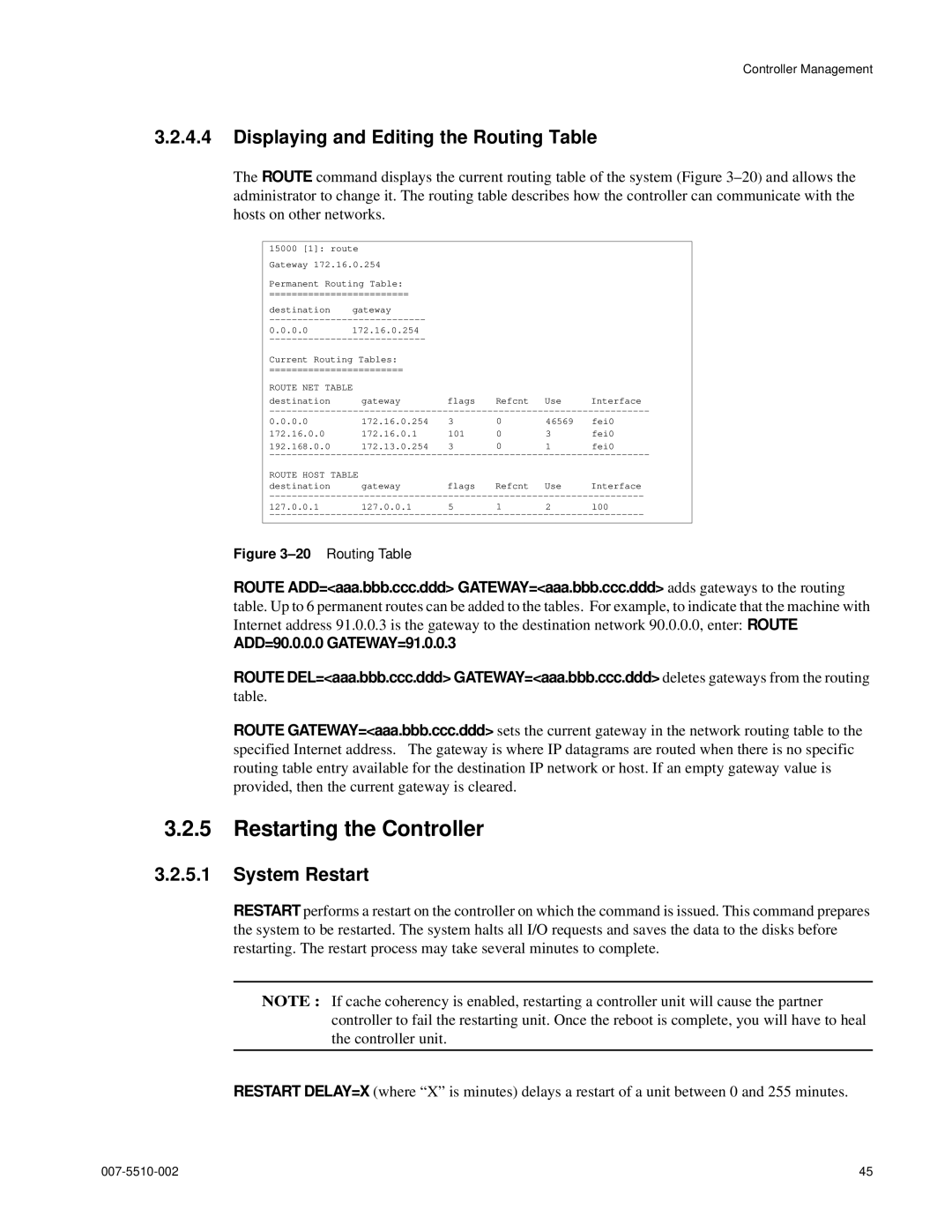
Controller Management
3.2.4.4Displaying and Editing the Routing Table
The ROUTE command displays the current routing table of the system (Figure
15000 [1]: route
Gateway 172.16.0.254
Permanent Routing Table:
=========================
destination | gateway |
|
|
|
|
|
| ||
0.0.0.0 | 172.16.0.254 |
|
|
|
|
|
| ||
Current Routing Tables: |
|
|
| |
======================== |
|
|
| |
ROUTE NET TABLE |
|
|
| |
destination | gateway | flags | Refcnt Use | Interface |
0.0.0.0 | 172.16.0.254 | 3 | 0 | 46569 | fei0 |
172.16.0.0 | 172.16.0.1 | 101 | 0 | 3 | fei0 |
192.168.0.0 | 172.13.0.254 | 3 | 0 | 1 | fei0 |
ROUTE HOST TABLE | gateway | flags | Refcnt Use | Interface |
destination |
127.0.0.1 127.0.0.1 5 1 2 l00
Figure 3–20 Routing Table
ROUTE ADD=<aaa.bbb.ccc.ddd> GATEWAY=<aaa.bbb.ccc.ddd> adds gateways to the routing table. Up to 6 permanent routes can be added to the tables. For example, to indicate that the machine with Internet address 91.0.0.3 is the gateway to the destination network 90.0.0.0, enter: ROUTE
ADD=90.0.0.0 GATEWAY=91.0.0.3
ROUTE DEL=<aaa.bbb.ccc.ddd> GATEWAY=<aaa.bbb.ccc.ddd> deletes gateways from the routing table.
ROUTE GATEWAY=<aaa.bbb.ccc.ddd> sets the current gateway in the network routing table to the specified Internet address. The gateway is where IP datagrams are routed when there is no specific routing table entry available for the destination IP network or host. If an empty gateway value is provided, then the current gateway is cleared.
3.2.5Restarting the Controller
3.2.5.1System Restart
RESTART performs a restart on the controller on which the command is issued. This command prepares the system to be restarted. The system halts all I/O requests and saves the data to the disks before restarting. The restart process may take several minutes to complete.
NOTE : If cache coherency is enabled, restarting a controller unit will cause the partner controller to fail the restarting unit. Once the reboot is complete, you will have to heal the controller unit.
RESTART DELAY=X (where “X” is minutes) delays a restart of a unit between 0 and 255 minutes.
45 |
